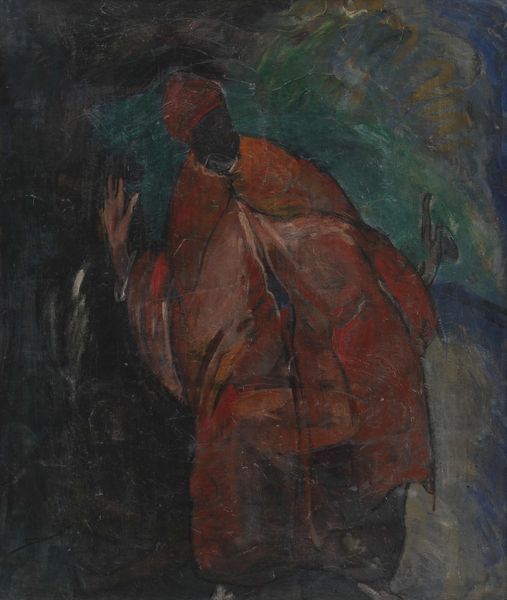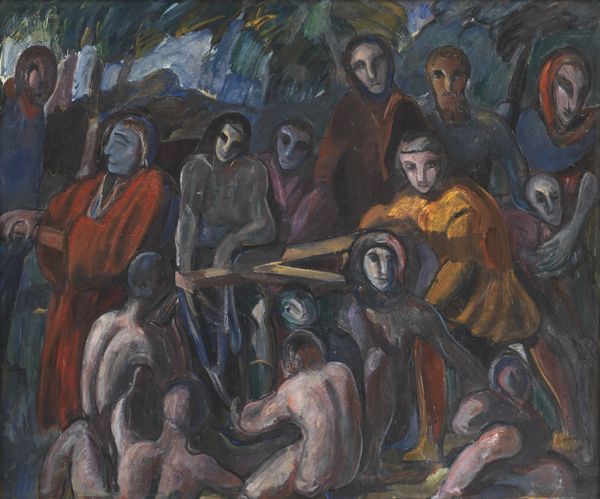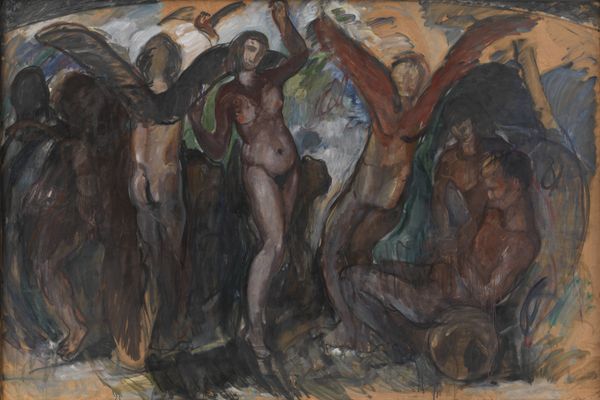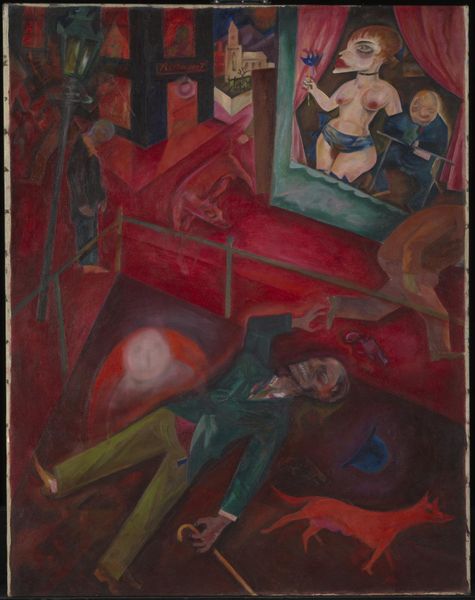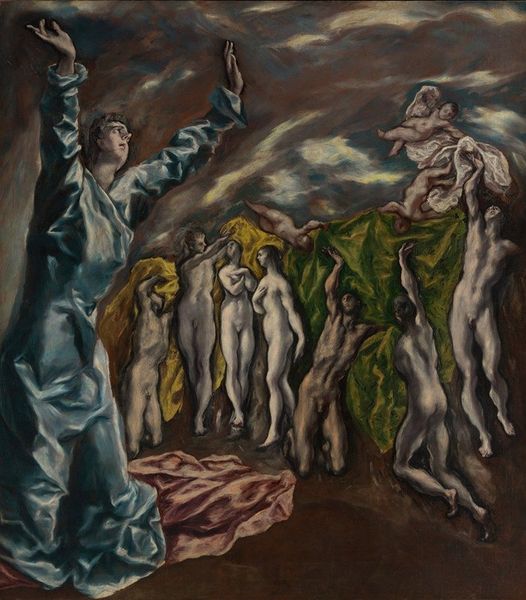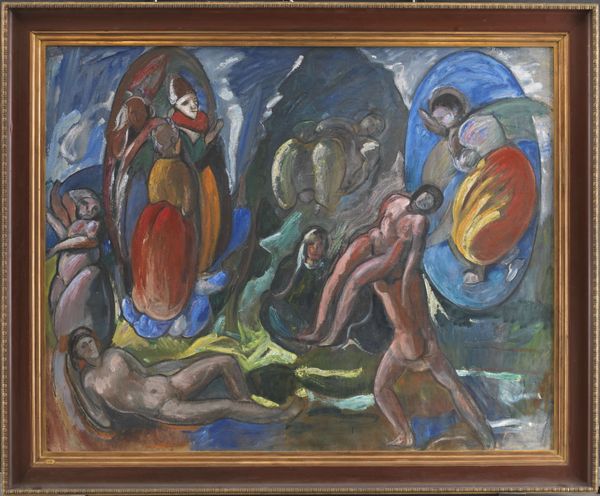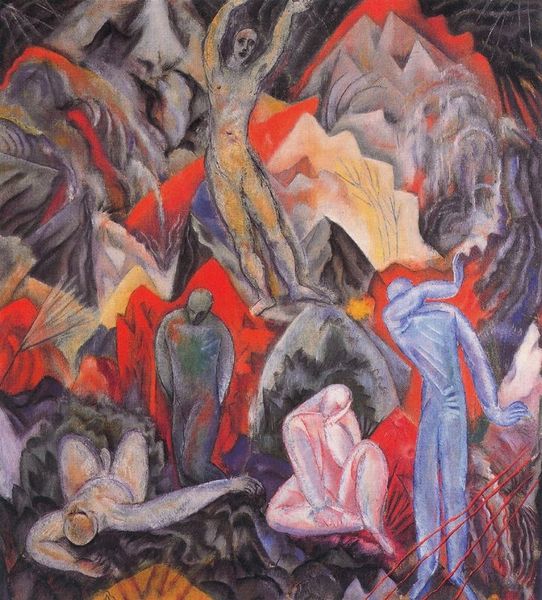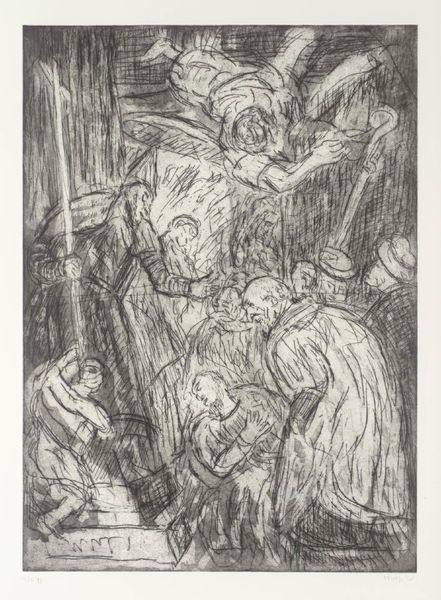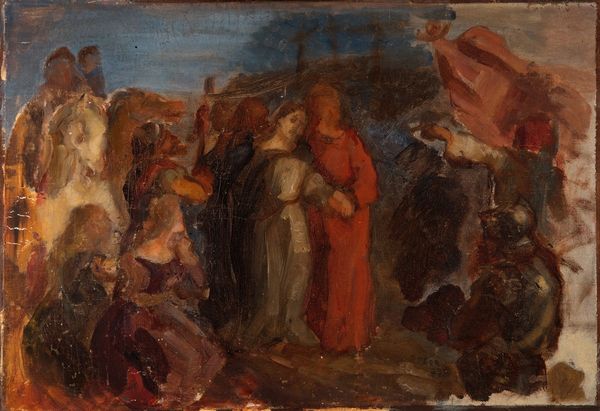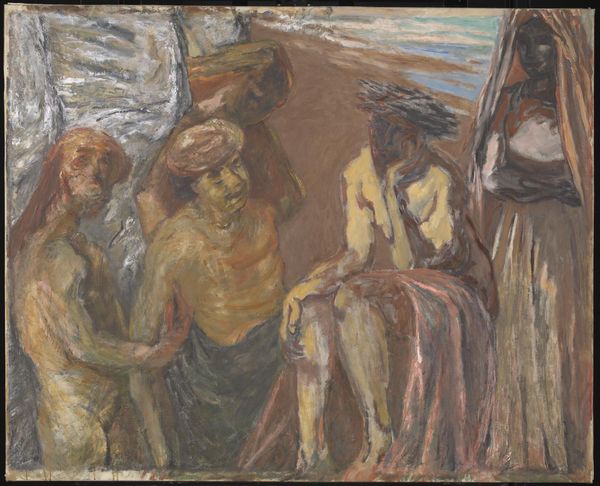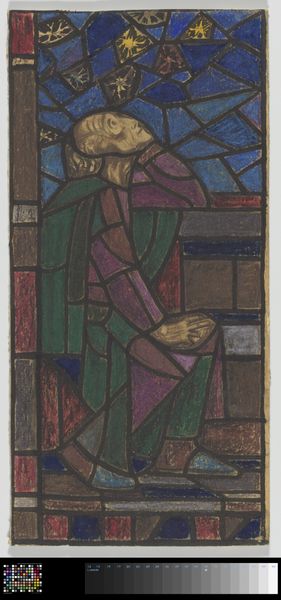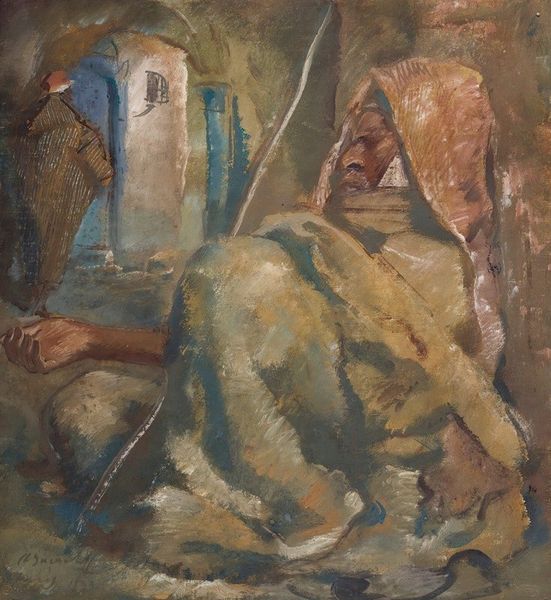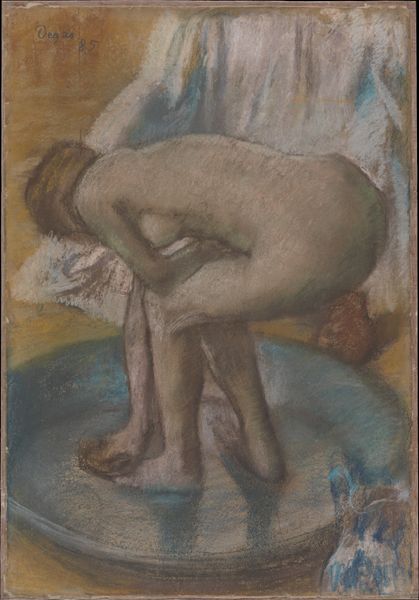
oil-paint
#
portrait
#
oil-paint
#
landscape
#
figuration
#
oil painting
#
expressionism
#
expressionist
Dimensions: 195.5 cm (height) x 135.7 cm (width) (Netto), 211 cm (height) x 151.2 cm (width) x 7.5 cm (depth) (Brutto)
Curator: Here we have J.A. Jerichau's 1912 painting, "Dante. Prophets, Opus I," currently residing here at the SMK, Statens Museum for Kunst. The artwork is rendered in oil paint. Editor: My immediate impression is one of brooding tension. The palette is largely muted, dominated by these earthy browns and somber blues, which heightens the sense of unease, even struggle. Curator: Jerichau's Expressionist approach positions Dante not just as a figure, but as a lens through which to examine human suffering and societal woes. We must view it within the context of the rising anxieties of the pre-war era, which deeply influenced Expressionist art. Consider the implications of representing a celebrated male author surrounded by distorted figures in states of distress. Editor: The artist definitely deconstructs Dante, which is fascinating. The composition is striking – this centrally located figure cloaked in crimson, juxtaposed against the amorphous figures to either side. His gesture feels performative; yet I'm not convinced by what is being said or implied, and that tension intrigues me. What would it have meant for Jerichau to strip Dante of his authority? Curator: Precisely! What’s vital here is exploring the role of the artist in representing trauma, which goes beyond a simple visual rendering to embody cultural and societal critiques. Jerichau engages with questions about who gets to narrate experiences of pain and suffering. We have a male gaze upon the torments endured perhaps disproportionately by women. Editor: And Jerichau emphasizes the visual impact—he uses color and form as an aesthetic expression of intense emotion. While I hear your concerns regarding representation, I'm primarily drawn to the work’s compositional strategies. Expressionism really hinges on that delicate dance between form and content. Curator: I find myself increasingly drawn to viewing it as Jerichau's way of questioning authority and highlighting the suffering inherent in a society on the brink. He’s provoking us to examine whose voices are amplified and whose are marginalized, even within the seemingly timeless themes of literature and art. Editor: So, it is an intriguing and potent synthesis of aesthetic and ideology. A visual rendering of an historical cultural legacy fraught with both its virtues and inherent problems, brought into stark, if emotionally difficult, relief.
Comments
No comments
Be the first to comment and join the conversation on the ultimate creative platform.
